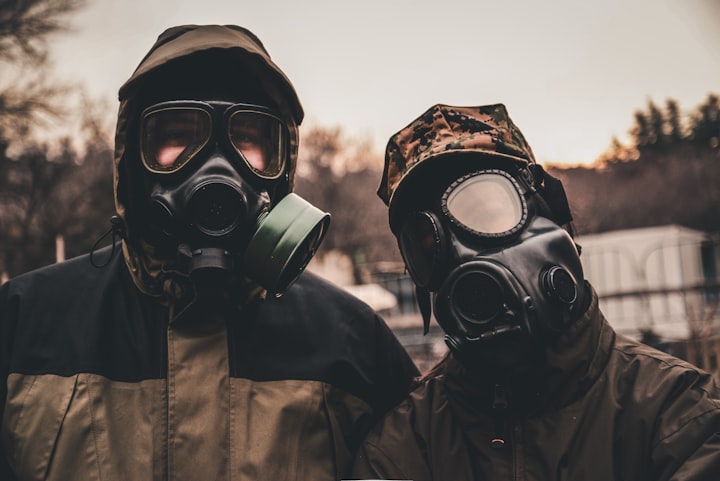Crate Homemade Hazmat Suit
Information on how to create a homemade hazmat suit.

Hazmat suits are essential protective gear used in situations where people come into contact with hazardous materials or substances. While there are commercially available hazmat suits, they can be expensive and difficult to obtain, especially during times of high demand. A homemade hazmat suit is a cost-effective alternative that can provide basic protection in emergency situations.
Creating a homemade hazmat suit requires some basic materials and knowledge of how to properly construct the suit. In this guide, we'll provide step-by-step instructions on how to create a basic hazmat suit using common household materials. It's important to note that a homemade hazmat suit may not provide the same level of protection as a commercially available hazmat suit, and it's essential to take additional precautions when using one.
This recipe guide was created with assistance from ChatGPT, a large language model trained by OpenAI. With this guide, you'll have the knowledge and tools to create a basic hazmat suit to protect yourself from hazardous materials.
Here are some steps to create a basic homemade hazmat suit:
Choose a material:
When choosing a material for a homemade hazmat suit, it's important to consider the properties of the material and how it will protect you from hazardous substances. Ideally, the material should be impermeable to liquids and gases, as well as resistant to tears and punctures. Some common materials used for hazmat suits include plastic sheeting, vinyl, or garbage bags.
Plastic sheeting is a good option as it is relatively inexpensive and easy to find at most hardware stores. It comes in a variety of thicknesses, so you can choose a thickness that is appropriate for the level of protection you need. Vinyl is another good option, as it is durable and provides a high level of protection against liquids and gases. However, it can be more difficult to find than plastic sheeting.
Garbage bags can also be used to create a homemade hazmat suit in a pinch. They are made of polyethylene, which is a durable and impermeable material. However, they are not as strong as plastic sheeting or vinyl and may tear more easily.
When selecting a material, be sure to choose one that is appropriate for the type of hazardous material you will be handling. For example, if you will be working with a highly corrosive chemical, you may need a material that is resistant to corrosion. It's also important to make sure that the material you choose is breathable to prevent overheating or discomfort while wearing the suit.
Overall, when selecting a material for a homemade hazmat suit, consider the level of protection you need, the type of hazardous material you will be handling, and the durability and breathability of the material.
Cut the material to size:
Once you have your material, you need to cut it to the appropriate size for your body. It's best to measure yourself beforehand to ensure that the suit will fit you properly. Use scissors to cut the material, and make sure to leave enough material for the hood, arms, and legs.
Create a hood:
To create a hood, you can use duct tape or the same material as the rest of the suit. The hood should fit tightly around your head and neck, leaving enough space for a face mask or respirator. The hood should also have a visor or opening for your face.
Seal the seams:
Use duct tape to seal all the seams of the suit, including the hood, arms, and legs. This will prevent any hazardous materials from entering the suit. Be sure to use enough tape to create a secure seal, but not so much that it becomes difficult to move around.
Wear appropriate safety gear:
It's important to wear additional safety gear, such as gloves, safety goggles, and a face mask or respirator, to provide extra protection. You may also want to wear a hat or head covering to keep any stray particles from getting into your hair.
It's important to note that a homemade hazmat suit may not provide the same level of protection as a commercially available hazmat suit. It's important to take extra precautions when using a homemade suit and to follow all safety guidelines for handling hazardous materials. It's also a good idea to have someone assist you in putting on the suit, as it can be challenging to do alone. Finally, be sure to properly dispose of the suit after use to prevent any contamination.
About the Creator
Rodney Connor
Rodney Connor is a passionate writer from Quiet Dell, WV who loves to craft engaging content. Whether it's fiction, non-fiction, or poetry, Rodney pours his heart and soul into every word he writes.





Comments
Rodney Connor is not accepting comments at the moment
Want to show your support? Become a pledged subscriber or send them a one-off tip.